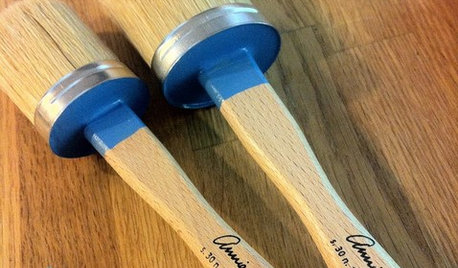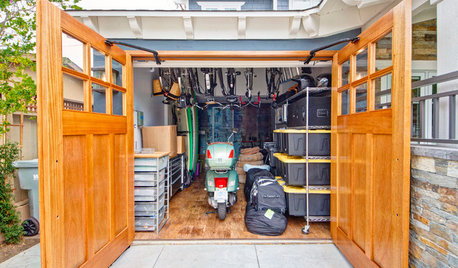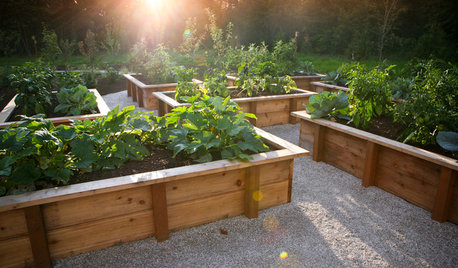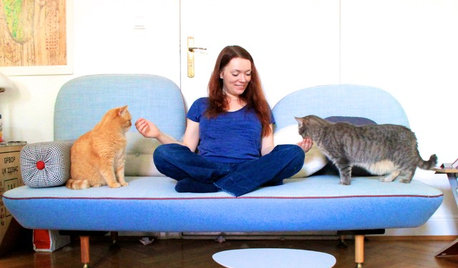What kind of material do you put in raised beds?
L.Walters18
11 years ago
Related Stories

GARDENING GUIDES8 Materials for Raised Garden Beds
Get the dirt on classic and new options for raised vegetable and plant beds, to get the most from your year-round garden
Full Story
GARDENING AND LANDSCAPINGBuild a Raised Bed to Elevate Your Garden
A bounty of homegrown vegetables is easier than you think with a DIY raised garden bed to house just the right mix of soils
Full Story
FARM YOUR YARDHow to Build a Raised Bed for Your Veggies and Plants
Whether you’re farming your parking strip or beautifying your backyard, a planting box you make yourself can come in mighty handy
Full Story
FARM YOUR YARDHouzz Call: Show Us Your One-of-a-Kind Chicken Coops
Do you have a fun or stylish backyard shelter for your feathered friends? Post your pictures and stories in the Comments!
Full Story
LIFEThe Polite House: How Can I Kindly Get Party Guests to Use Coasters?
Here’s how to handle the age-old entertaining conundrum to protect your furniture — and friendships
Full Story
PRODUCT PICKSGuest Picks: Handy Finds for Painting Projects of All Kinds
Make over rooms and furniture more easily and with better results with the right paint and gear
Full Story
GARAGESHouzz Call: How Do You Put Your Garage to Work for Your Home?
Cars, storage, crafts, relaxing ... all of the above? Upload a photo of your garage and tell us how it performs as a workhorse
Full Story
GARDENING AND LANDSCAPINGRaised Beds Lift Any Garden
From good old-fashioned wood garden boxes to modern metal troughs, raised beds can make any landscape space look great
Full Story
SPRING GARDENINGInspiring Raised Beds for Fall and Spring Planting
Make Your Next Vegetable Garden Even Better with Beautiful Boxes and Paths
Full Story
PETSWorld of Design: Pampered Pets and Their 10 One-of-a-Kind Homes
Fall in love with these critters and their clever living spaces, from a cat playground in France to a chicken house in the U.S.
Full StoryMore Discussions







IAmSupernova
pnbrown
Related Professionals
Forest Acres Landscape Architects & Landscape Designers · Bedford Landscape Contractors · Del Aire Landscape Contractors · Ellensburg Landscape Contractors · Eureka Landscape Contractors · Fishers Landscape Contractors · Fort Mill Landscape Contractors · Huntington Landscape Contractors · Kaysville Landscape Contractors · Las Vegas Landscape Contractors · Lebanon Landscape Contractors · Pueblo West Landscape Contractors · Thornton Landscape Contractors · York Landscape Contractors · Dearborn Driveway Installation & Maintenancedigdirt2
ponderous1
nancyjane_gardener
wayne_5 zone 6a Central Indiana
Kevin Reilly
jonfrum
wayne_5 zone 6a Central Indiana
TheMasterGardener1
yukkuri_kame
wayne_5 zone 6a Central Indiana
gardenlen
gardenlen
greenmulberry
pnbrown
tn_gardening